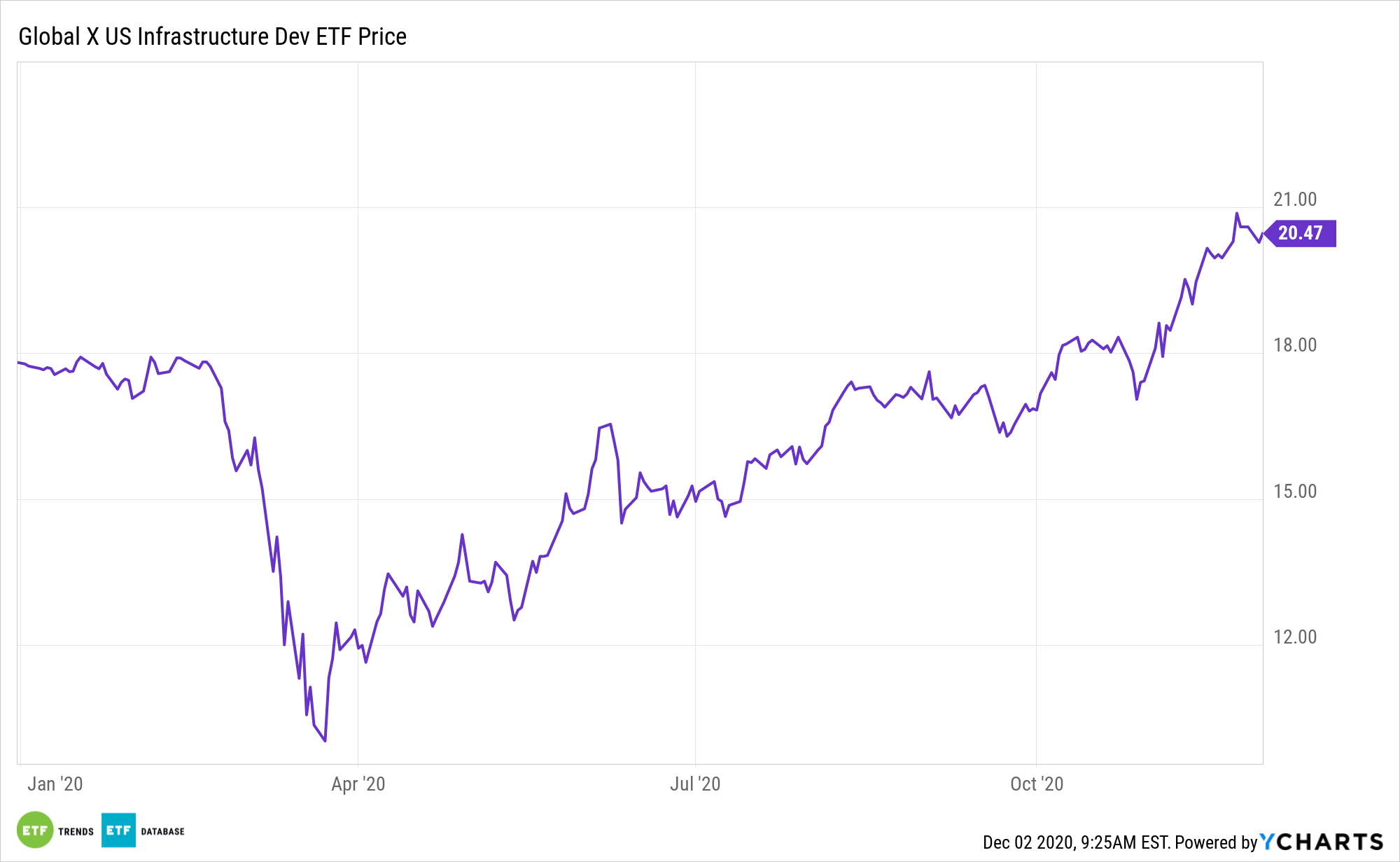The 2020 political season is behind us, but that doesn’t dent the case for infrastructure assets such as the Global X U.S. Infrastructure Development ETF (PAVE). In fact, the case for PAVE may be just gaining momentum.
PAVE tries to reflect the performance of the Indxx U.S. Infrastructure Development Index, which is comprised of companies focused on domestic infrastructure development, including those involved in construction and engineering; production of infrastructure raw materials, composites, and products; industrial transportation; and producers/distributors of heavy construction equipment.
With the economy still feeling the effects of the coronavirus pandemic and more stimulus needed, some political observers believe the Biden Administration could move rapidly on infrastructure legislation early next year.
“President-elect Joe Biden ran on a platform that featured aggressive infrastructure investment as a key pillar of economic policy and potential COVID-19 recovery efforts,” writes Global X analyst Andrew Little. “His $2 trillion cleantech and infrastructure plan seeks to provide stimulus and job-creation by building and retrofitting physical infrastructure that facilitates commerce and improves the American quality of life.”
The PAVE ETF: Deep Stocks, Inflation Protection, and More
PAVE holds 93 stocks from over a dozen industry groups, giving it one of the deepest benches and widest reaches among all infrastructure ETFs. Compared to rival funds, PAVE is light on utilities and energy stocks while tilting heavily toward the cyclical industrial and materials sectors.

“An additional round of COVID-19 stimulus is necessary as unemployment persists and current trends in positive cases indicate further lockdowns. We expect that the Biden administration will push to have infrastructure investment included in any stimulus plan introduced in his first months in office,” notes Little.
Infrastructure exposure could help protect against long-term inflationary risks since most infrastructure operators pass the cost increases of inflation to users per long-term contracts that typically underpin the infrastructure business models. Adding to the relevance of PAVE is that the Global X fund is the only one of its peers with an exclusively domestic focus.
“We expect new and retrofitted physical infrastructure as well as clean energy infrastructure to require extensive raw materials including aluminum, for construction and transportation; cement, a key ingredient for making concrete; copper, for electrification; and lithium, for energy storage,” says Little. “Further downstream, companies exposed to upgrading physical infrastructure and building out clean energy capacity are likely to benefit from heightened investment, including those involved in construction and engineering, the production of heavy equipment, and manufacturing components in the CleanTech value chain.”
For more alternative investing ideas, visit our Alternatives Channel.
The opinions and forecasts expressed herein are solely those of Tom Lydon, and may not actually come to pass. Information on this site should not be used or construed as an offer to sell, a solicitation of an offer to buy, or a recommendation for any product.








